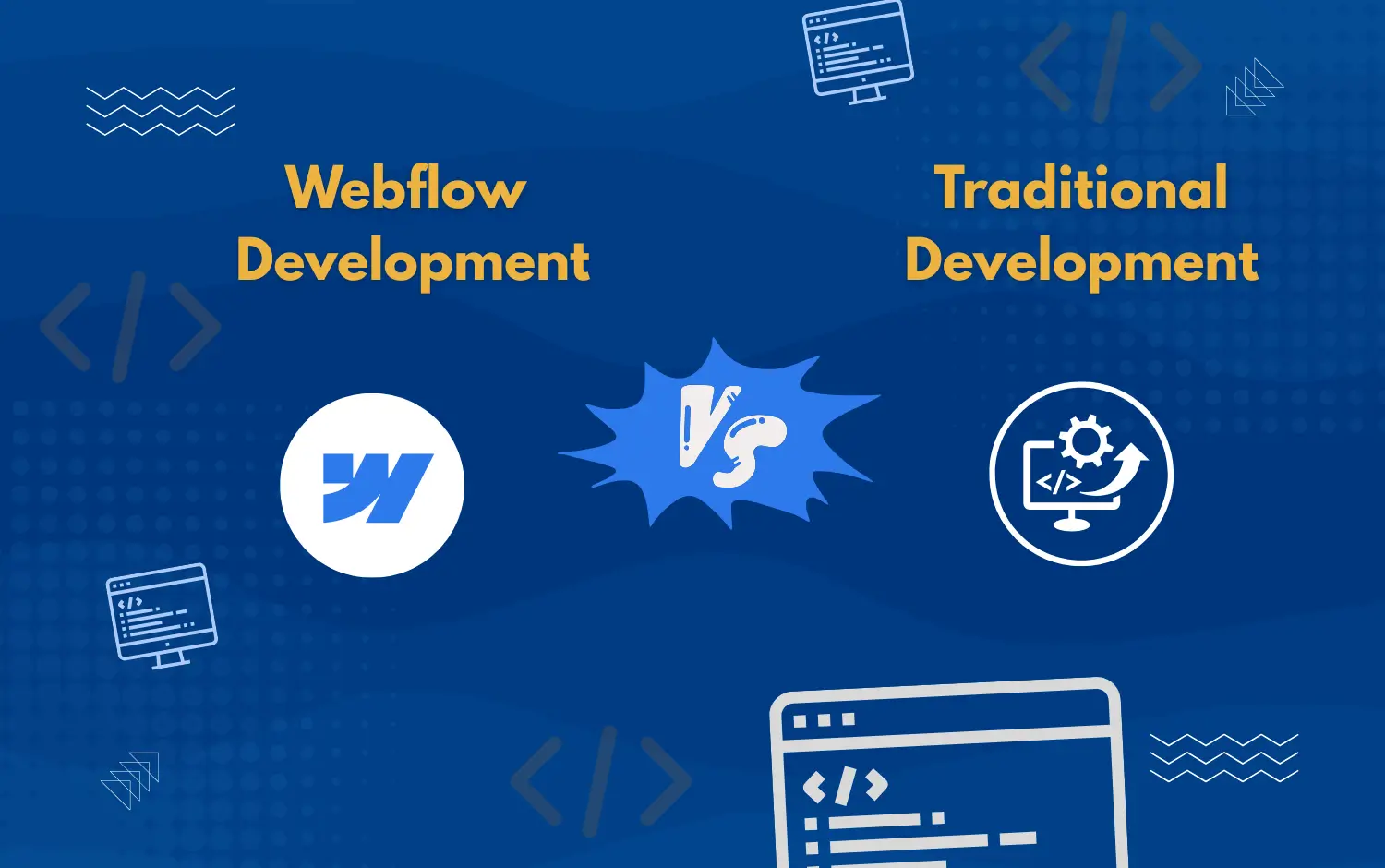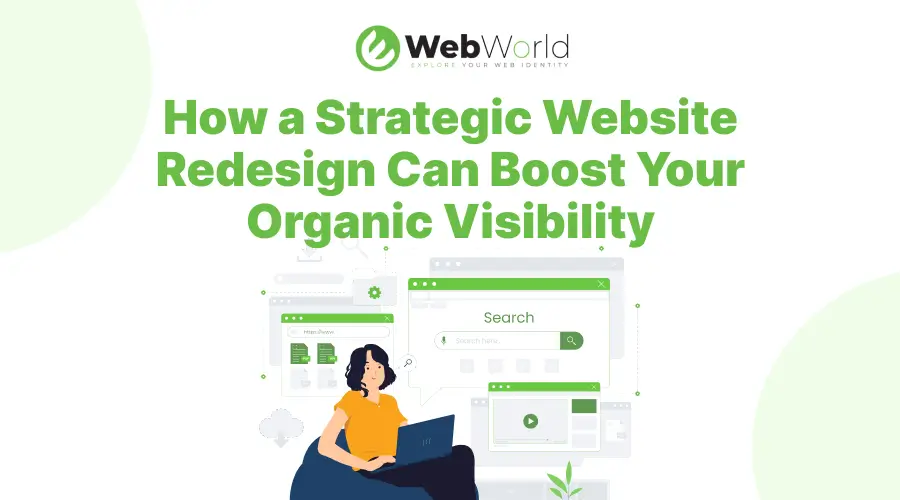How A Good Website Design Builds Trust with Your Audience

When people land on your website, they make judgments faster than you might think. Research shows it takes just 50 milliseconds (0.05 seconds) for a user to form an impression about your site. That’s less time than a blink and in that instant, design is the only thing speaking for you. Before a single word is read, your audience is already asking themselves: Does this brand look professional? Can I trust them with my time, attention, or even my money?
This is where great website design becomes much more than aesthetics. It becomes the silent ambassador of your brand. A clean layout, intuitive navigation, and thoughtful visuals send signals of credibility and professionalism. On the other hand, clunky design, inconsistent branding, or hard-to-use interfaces raise red flags that no amount of persuasive copy can erase.
Think about it, when you walk into a well-organized, beautifully lit store, you feel welcome and at ease. But if the shelves are messy and the lights are flickering, you probably won’t stay long, let alone buy something. Websites work the same way. A good web design tells your audience, “We care about your experience.” That simple message is often the difference between a visitor bouncing away in seconds or staying long enough to become a customer.
Trust is the currency of the digital age, and design is one of the fastest ways to earn it. When your website or app reflects clarity, empathy, and professionalism, it reassures users that they’ve come to the right place. And when people trust your brand, they don’t just buy, they come back, recommend you to others, and become part of your growth story.
The Link Between Design & Trust
In today’s digital world, trust isn’t just a basic necessity it’s the single most important factor in whether someone chooses to engage with your brand. According to Stanford research, 94% of first impressions online are design-related. That means your layout, colors, spacing, and overall polish do more to shape a visitor’s opinion than your words or offers, at least in the first crucial seconds.
So what triggers that sense of trust?
- Professionalism: A well-structured, modern design tells users that your brand is legitimate and reliable.
- Ease of Use: If people can find what they need without frustration, they automatically view you as more trustworthy.
- Credibility Signals: Elements like consistent branding, secure checkout icons, testimonials, and clear contact information all reassure users they’re in safe hands.
The bottom line is when your design reflects order and attention to detail, users feel safe. And in digital spaces where scams and low-quality experiences are common, that feeling of safety is what keeps them exploring rather than exiting.
The Psychology of First Impressions in Web Design
Website design isn’t just visual, it’s psychological. The colors you choose, the typography you use, and the imagery you display all shape how your brand feels in the first seconds of interaction. For example:
- Clean, minimal layouts create a sense of calm and credibility.
- Cluttered, inconsistent designs feel overwhelming and raise suspicion.
Color psychology plays a huge role too. It’s not an accident that most banks, insurance firms, and fintech apps lean heavily on shades of blue. Blue is universally associated with trust, stability, and security. Meanwhile, a brand with chaotic color schemes or overly flashy graphics risks sending the opposite signal, confusion or even unreliability.
Typography matters as well: bold, clear fonts signal authority, while overly ornate or inconsistent typefaces can distract or reduce legibility. Images that feel authentic (real people, real scenarios) are far more likely to build trust than staged stock photography.
When all these design choices align, colors, fonts, visuals, and structure, they form a cohesive first impression that feels safe and welcoming. And that feeling of trust is what nudges users closer to engagement, if it’s reading your content, signing up for a newsletter, or making a purchase.
Core Design Elements That Build Trust

Design isn’t just about aesthetics, it’s about creating an environment where visitors feel confident engaging with your brand. Here are the fundamental design elements that play a direct role in shaping trust:
a. Consistency & Branding
- Same color palette across pages builds familiarity.
- Repeated use of logos and typography strengthens brand recall.
- Consistent tone and visuals across platforms = reliability.
b. Clarity & Simplicity
- Minimal menus and clear categories make navigation effortless.
- Short, scannable copy reduces overwhelm.
- White space creates breathing room and signals professionalism.
c. Visual Hierarchy & CTAs
- Headings and subheadings organize content flow.
- Contrasting buttons draw attention to CTAs without shouting.
- Balanced layout guides the eye naturally from start to action.
d. Mobile & Responsive Design
- Mobile-first design ensures accessibility on any screen size.
- Fast-loading, responsive images reduce bounce rates.
- Touch-friendly buttons and layouts improve usability.
e. Social Proof & Credibility Signals
People trust people. Reviews, testimonials, client case studies, and recognizable logos all serve as proof that others already believe in you. But good design makes these elements shine without overwhelming the page. A neatly integrated testimonial slider or well-placed trust badge works far better than a cluttered wall of logos. When social proof is presented naturally, it reassures visitors that they’re in good company.
- Testimonials highlight positive experiences from real clients.
- Trust badges and certifications reduce hesitation at checkout.
- Case studies and logos show credibility at scale.
The Cost of Poor Design (Trust Killers)
Poor website design doesn’t just look bad, it directly impacts user trust, engagement, and ultimately your bottom line. Even small design missteps can create friction, make users doubt your credibility, or drive them straight to a competitor.
- Slow Load Speeds: Pages that take too long to load frustrate users, leading them to leave before seeing your content or making a purchase. Studies show that even a one-second delay can reduce conversions by up to 7%.
- Outdated Design: Websites that feel old or neglected send a subconscious signal that the business itself is outdated or unreliable. Visitors may hesitate to trust your services or make purchases.
- Stock Images & Sloppy Visuals: Overused stock photos or low-quality visuals reduce authenticity. Users want to see real people, products, and scenarios—they trust what feels genuine.
- Confusing Checkout Process: A complicated or unintuitive checkout can lead to abandoned carts and lost revenue. Clear steps, visible progress indicators, and simple forms are crucial for maintaining user trust.
Every design misstep, no matter how small, chips away at credibility. Investing in thoughtful, user-focused design isn’t just about aesthetics, it’s about preventing these trust killers from undermining your conversions and ROI.
How Website Design Directly Impacts ROI
Design isn’t just about looking good, it’s about making your business work better. When your website feels trustworthy and user-friendly, the results show up in your bottom line.
Here’s how great design drives ROI:
- Boosts Conversions: Users who trust your site are more likely to take action, buying, signing up, or requesting a quote.
- Encourages Repeat Business: A seamless experience keeps customers coming back and sharing your brand with others.
- Reduces Support Costs: Clear navigation and intuitive layouts mean fewer questions and complaints for your team to handle.
- Improves SEO Performance: Engaged visitors stay longer, explore more pages, and bounce less, sending positive signals to search engines.
Investing in thoughtful, user-focused design isn’t just an expense, it’s a strategic move that pays off in sales, loyalty, and long-term growth.
Practical Tips for Businesses to Build Design-Driven Trust
Building trust through design doesn’t have to be complicated. Small, intentional choices can make a big difference in how your audience perceives your brand. Here’s some quick tips to make your web design trustworthy:
- Keep Layouts Simple: Avoid clutter and flashy distractions. A clean, organized design feels professional and easy to navigate.
- Test Across Devices: Always check your website on mobile, tablet, and desktop. A responsive design shows you care about every user experience.
- Use Real Photos and Testimonials: Authentic visuals and client stories resonate more than stock images, making your brand feel human and credible.
- Invest in Professional Branding: Consistent logos, color schemes, and typography reinforce reliability and recognition.
- Audit Regularly: Outdated design or broken elements can erode trust. Review your website periodically to keep it fresh and functional.
Conclusion
A good website design does more than make your website look visually appealing, it’s a powerful tool for building trust, credibility, and long-term relationships with your audience. Every element on your site, from layout and typography to images and navigation, sends subtle signals about your brand. When these elements are thoughtfully designed, visitors immediately perceive your business as professional, reliable, and user-focused.
Trust is the bridge between curiosity and conversion. Without it, even the most compelling offers can go unnoticed. With it, every click, scroll, and interaction becomes an opportunity to guide users toward meaningful engagement, whether that’s making a purchase, signing up for a service, or returning for repeat visits.
Ultimately, a well-designed website speaks volumes before a single word is read. It tells your audience that you care about them, that you’re credible, and that they’ve come to the right place. In the competitive digital world, these impressions matter, and they can be the difference between a bounce and a lifelong customer.
Ready to create a website that your audience trusts at first glance? At eWebWorld, we combine UI/UX expertise, web design, and user-first strategies to build sites that look great, function flawlessly, and drive real results.
Let’s design your brand’s trust online, get in touch today.
People Also Ask
1. How does website design impact trust?
A clean, intuitive, and consistent website signals professionalism and credibility, making users more likely to engage and convert.
2. What are the key elements of trust-building design?
Consistency, clarity, responsive layouts, authentic visuals, clear CTAs, and social proof all build user trust.
3. Why is UX important for conversions?
Good UX reduces friction, guides users smoothly, and encourages actions like purchases, sign-ups, or inquiries.
4. How can mobile-friendly design improve trust?
Responsive, fast-loading websites show users you care about their experience on any device, boosting credibility.
5. Does website design affect SEO?
Yes. Engaging, easy-to-navigate websites reduce bounce rates, increase dwell time, and improve search engine rankings.













